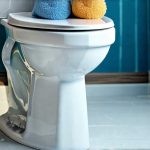Urinary calm – the ability to relax and confidently manage bladder function – is something many take for granted until it’s disrupted. Stress, anxiety, even simple everyday pressures can manifest as urgency, frequency, or a persistent feeling of needing to “go.” This isn’t merely about inconvenience; it impacts quality of life, social interactions, and overall well-being. Often, the physical sensation is amplified by psychological factors – a vicious cycle where worry exacerbates the symptoms, leading to more worry. Understanding this interplay between mind and body is crucial when seeking strategies for improvement, and remarkably, something as fundamental as breath can be powerfully effective in restoring a sense of control.
The connection between breathing and bladder function stems from the autonomic nervous system, which regulates involuntary bodily processes like heart rate, digestion, and bladder control. When we’re stressed or anxious, the sympathetic nervous system – our “fight-or-flight” response – kicks into gear. This leads to muscle tension (including in the pelvic floor), increased heart rate, and a heightened state of alertness. Conversely, activating the parasympathetic nervous system – the “rest-and-digest” system – promotes relaxation, lowers heart rate, and allows for calmer bladder function. Breath control techniques are direct pathways to influencing this autonomic balance, effectively shifting from sympathetic dominance to parasympathetic calm. This is not about stopping the urge; it’s about creating space around the urge, lessening its intensity, and building confidence in your body’s natural processes.
Diaphragmatic Breathing & Pelvic Floor Awareness
Diaphragmatic breathing, often called “belly breathing,” is a cornerstone of many stress-reduction techniques and particularly relevant for urinary calm. It involves consciously engaging the diaphragm – the large muscle at the base of the lungs – to draw air deeply into the abdomen, rather than shallowly into the chest. This type of breathing stimulates the vagus nerve, a key component of the parasympathetic nervous system. – Begin by lying down or sitting comfortably with your knees slightly bent. – Place one hand on your chest and the other on your belly. – Inhale slowly through your nose, allowing your belly to rise while keeping your chest relatively still. – Exhale slowly through pursed lips, feeling your belly fall. The hand on your abdomen should move noticeably more than the hand on your chest. Regular practice of diaphragmatic breathing can significantly reduce overall stress levels, which directly translates to less bladder irritation and a calmer experience. For those seeking further guidance, explore breath practices for calming bladder nerves.
Crucially, integrating pelvic floor awareness with diaphragmatic breathing amplifies its benefits for urinary health. The pelvic floor muscles support the bladder, urethra, and other pelvic organs. When tense, they can constrict around these structures, contributing to urgency or incomplete emptying. Diaphragmatic breathing encourages gentle relaxation of the pelvic floor. As you inhale deeply, visualize your diaphragm descending, creating space in the pelvis and allowing the pelvic floor muscles to soften. Avoid actively clenching the pelvic floor during this process; the goal is passive release. This practice helps restore natural movement patterns and reduces unnecessary tension that can contribute to urinary symptoms. You might find it helpful to incorporate pelvic tilt exercises with breath for deeper relaxation.
It’s important to remember that building this connection takes time and consistency. Start with short sessions (5-10 minutes) several times a day, gradually increasing duration as you become more comfortable. Don’t get discouraged if your mind wanders; simply gently redirect your attention back to the sensation of your breath and the subtle movements in your abdomen. This is about cultivating a mindful awareness of your body, not achieving perfect breathing immediately.
Box Breathing for Urgency Management
Box breathing (also known as square breathing) is a simple yet powerful technique that can be particularly useful in the moment when you experience an urgent need to urinate. It’s designed to quickly calm the nervous system and create a sense of control. – Inhale deeply for a count of four. – Hold your breath for a count of four. – Exhale slowly for a count of four. – Hold your breath again for a count of four. Repeat this sequence several times, focusing on the rhythm and sensation of each phase.
The key to box breathing’s effectiveness lies in its structured nature. The equal timing of inhale, hold, exhale, and hold creates a balanced stimulation of both sympathetic and parasympathetic nervous systems, ultimately leading to a state of calm centeredness. When an urge arises, rather than panicking or rushing to the toilet, pause and practice box breathing. This doesn’t eliminate the urge entirely but can often lessen its intensity, providing you with more time and control. Focus on lengthening each phase gradually as you become more comfortable, adapting it to your own natural rhythm. Consider combining this with breathwork techniques for reduced frequency.
Box breathing is a valuable tool for managing acute urgency, but it’s most effective when combined with regular practice of diaphragmatic breathing. This builds a foundation of calm that makes the box breathing technique even more potent in stressful situations. Think of it as proactive preparation alongside reactive support. To further enhance your daily routine, explore creating daily calm zones.
Progressive Muscle Relaxation & Breath Synchronization
Progressive muscle relaxation (PMR) involves systematically tensing and relaxing different muscle groups throughout the body, often combined with breath awareness. This helps to release physical tension that may be contributing to bladder symptoms and heightens your awareness of what true relaxation feels like. – Begin by finding a quiet space where you can lie down comfortably. – Start with your toes: tense them tightly for 5-10 seconds, then slowly release, paying attention to the sensation of letting go. Synchronize this process with your breath – inhale as you tense, exhale as you release. – Continue working your way up through your body, tensing and releasing muscle groups in your feet, calves, thighs, abdomen, chest, arms, shoulders, and face.
The inclusion of synchronized breathing is vital. It reinforces the connection between physical relaxation and mental calm. As you release each muscle group, focus on allowing your breath to flow freely, deepening the sense of letting go. For individuals experiencing urinary symptoms, paying particular attention to relaxing the muscles in the abdomen and pelvic floor during PMR can be especially beneficial. This isn’t about forcing relaxation; it’s about noticing the difference between tension and release. To support a restful evening, consider evening breathing drills for urinary calm.
PMR requires patience and practice. It may feel awkward at first, but with regular use, you’ll become more adept at identifying and releasing tension in your body. This heightened awareness can translate into a greater sense of control over your bladder function and reduced anxiety surrounding urinary symptoms. It’s another powerful tool to add to your toolkit for promoting overall well-being and cultivating urinary calm.
Breath Counting for Mindful Distraction
Breath counting is a simple mindfulness technique that involves focusing on the sensation of each inhale and exhale, mentally counting breaths up to a specific number (e.g., ten) and then starting over. It’s an excellent way to gently redirect your attention away from anxious thoughts or intrusive sensations – including bladder urgency – without actively suppressing them. – Find a comfortable position, either sitting or lying down. – Close your eyes gently and focus on the natural rhythm of your breath. – Inhale deeply, then exhale slowly, mentally counting “one” with each exhale. – Continue counting breaths up to ten, then start over.
The effectiveness of breath counting lies in its ability to occupy the mind without requiring significant effort or concentration. It’s a form of mindful distraction – not ignoring the urge, but shifting your focus to something calming and grounding. If your mind wanders (which is perfectly normal), simply acknowledge the thought without judgment and gently redirect your attention back to counting breaths. This practice cultivates present moment awareness and reduces rumination, which can exacerbate urinary symptoms. For a more structured approach, you might find mindfulness techniques for urge control helpful.
Breath counting can be used proactively as a general stress-reduction technique or reactively when you experience an urgent need to urinate. It provides a temporary respite from anxious thoughts, allowing you to regain composure and assess the situation calmly. Remember, it’s not about achieving a perfectly clear mind; it’s about gently guiding your attention back to the present moment. This simple practice can be remarkably effective in creating space around the urge and lessening its intensity.
Disclaimer: This article is for informational purposes only and does not constitute medical advice. If you are experiencing urinary symptoms, please consult with a qualified healthcare professional for diagnosis and treatment.





















